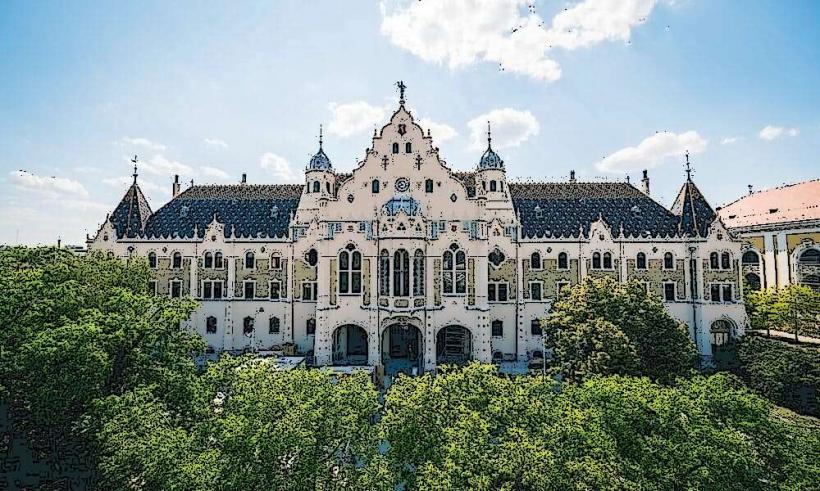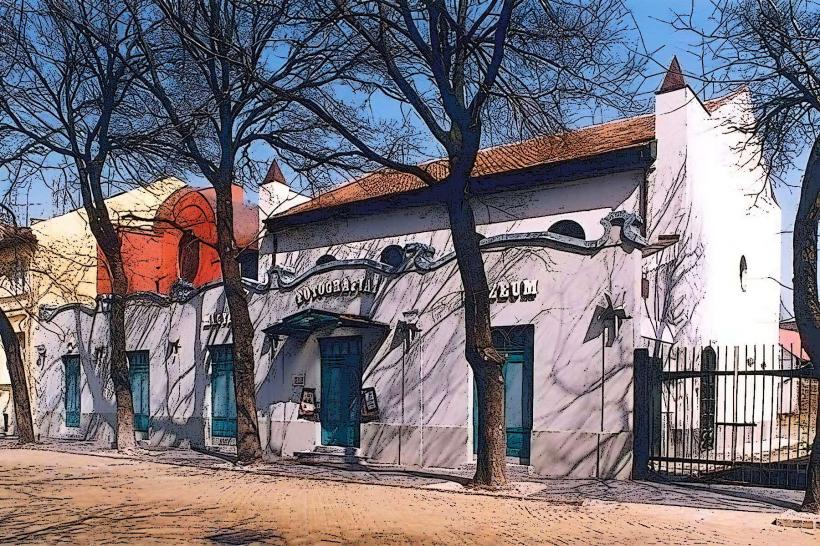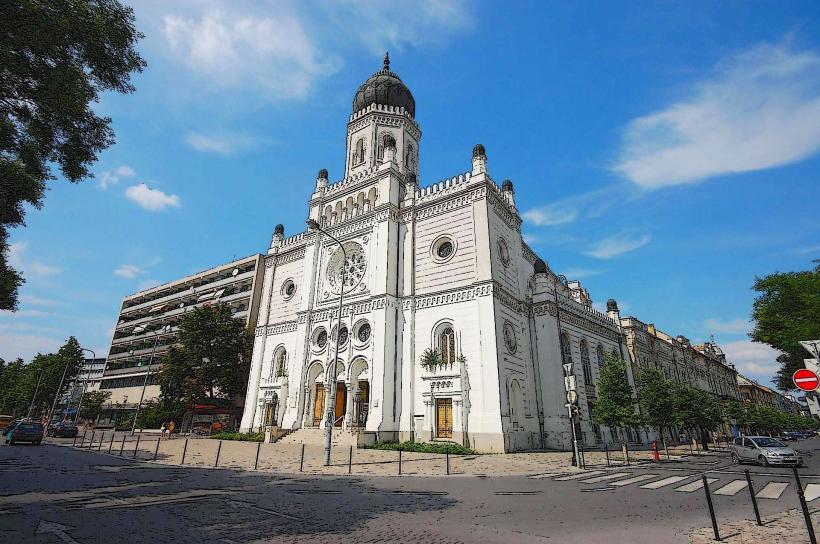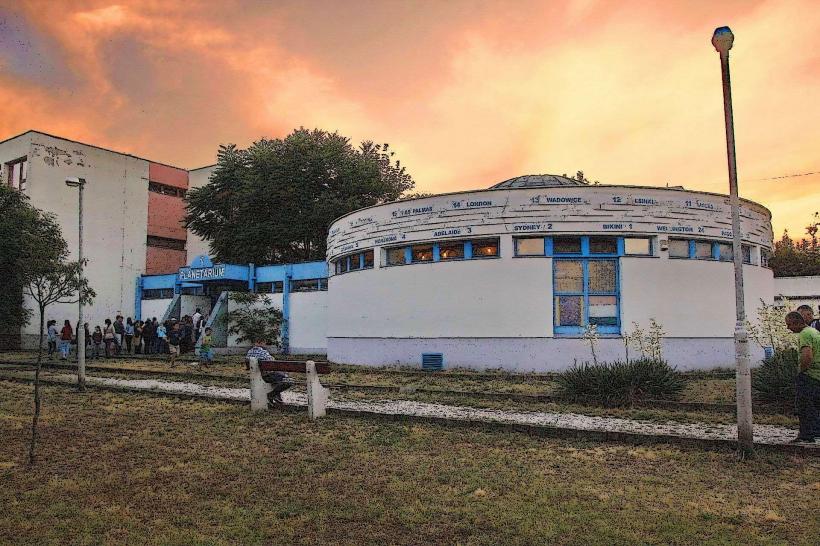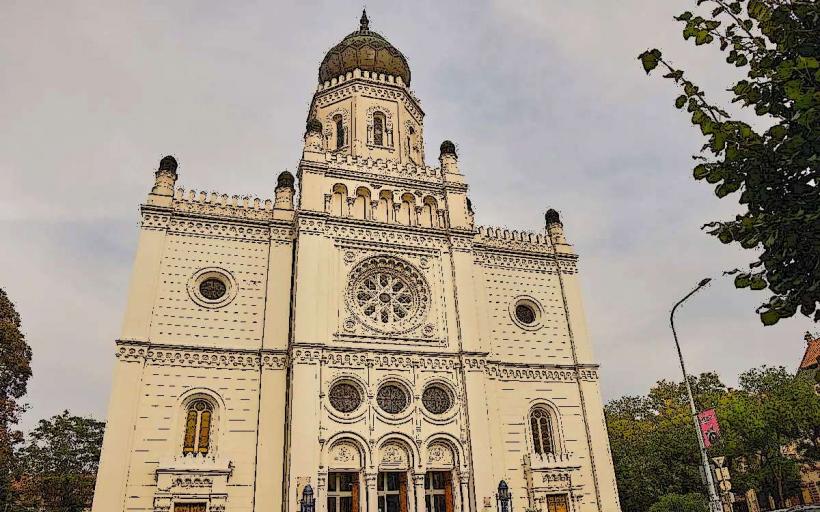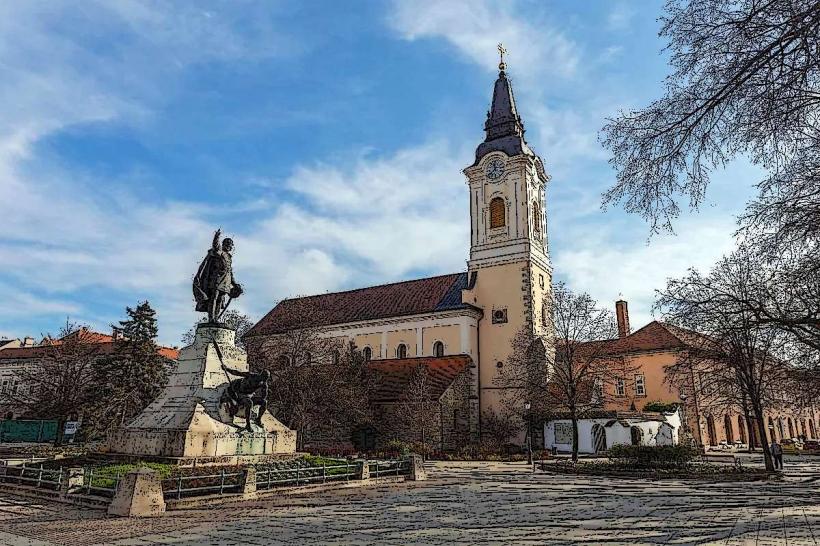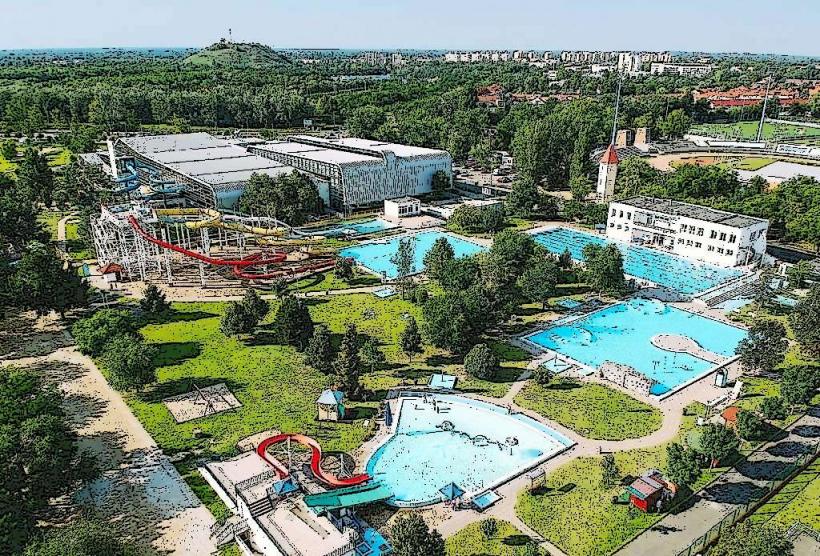Information
Landmark: CifrapalotaCity: Kecskemet
Country: Hungary
Continent: Europe
Cifrapalota (Kecskemét)
Cifrapalota, also known as the “Chamber Palace”, is one of the most iconic and architecturally significant buildings in Kecskemét, Hungary. Located in the heart of the city, this Baroque-style building is a must-see for anyone interested in the history and cultural heritage of Kecskemét. The building is renowned not only for its stunning architecture but also for its role in the city’s cultural and historical development.
History and Background
The construction of Cifrapalota was completed in 1799, during the late Baroque period. It was built for the wealthy Jewish merchant Mózes Sámuel and designed by the architect Károly Németh, who was one of the leading figures of Hungarian architecture at the time. The palace served as a residence for the merchant family and as a symbol of their prosperity.
At the time of its construction, Kecskemét was experiencing growth, and the city’s elite were eager to showcase their wealth and status through grand architectural projects. Cifrapalota is one of the best examples of this, with its lavish design reflecting the opulence of its original owners.
During the 20th century, as the Jewish community faced persecution, the palace changed ownership several times, eventually becoming a public institution. Today, it serves as the Hungarian Museum of Photography (Magyar Fotográfiai Múzeum), preserving both the building’s historical significance and showcasing photography as an art form.
Architectural Features
The Cifrapalota is widely regarded as one of the finest examples of late Baroque architecture in Hungary, blending classical and neoclassical elements in a unique way. Some key architectural features of the building include:
Facade:
- The facade of Cifrapalota is distinguished by its elegant decoration and symmetrical design. The building’s exterior features a combination of stone and stucco decorations, with intricate detailing that highlights the wealth of its original owners.
- The large, central entrance is flanked by balconies and decorated with ornate carvings, which were typical of the late Baroque period.
Roof and Dome:
- The building is topped by a baroque dome that provides a dramatic visual focal point and adds grandeur to its overall appearance.
- The roof is designed with large windows that illuminate the upper floors, contributing to the building’s light and airy interior.
Interior:
- Inside, the palace features high ceilings, large windows, and spacious rooms that showcase the luxurious lifestyle of the former inhabitants. The rooms are decorated with intricate moldings, frescoes, and period furniture, which are all part of the building’s historical charm.
- The layout includes multiple halls and chambers, designed to accommodate both family life and social gatherings.
Facade Ornamentation:
- The building’s exterior features elaborate stucco work, including floral motifs and classical details that enhance its Baroque character. These features were designed to show off the wealth and taste of its original owners.
Windows and Doors:
- The windows are large and arched, typical of Baroque designs, while the doors are solid wood, showcasing craftsmanship from the period.
Function and Role in the City
After its construction, Cifrapalota served as the residence of a prominent merchant family. In the late 19th and early 20th centuries, the building changed hands and functioned in various capacities before being repurposed as a museum.
- Museum of Photography: Today, Cifrapalota is home to the Hungarian Museum of Photography. It serves as a major cultural and historical landmark in Kecskemét, showcasing Hungary’s photographic heritage through exhibitions and collections. The museum features works from Hungarian photographers as well as international artists and focuses on both historical and contemporary photography.
- Cultural Center: In addition to its role as a museum, Cifrapalota also functions as a cultural center, hosting educational programs, workshops, and exhibitions related to the visual arts and photography.
The building’s architectural significance and the museum’s rich collection make it an essential part of Kecskemét’s cultural scene.
Current Role and Visitor Experience
As one of Kecskemét’s most iconic buildings, Cifrapalota offers visitors a chance to experience both the architectural splendor of the late Baroque period and the artistic significance of photography.
Photography Exhibitions: The museum frequently holds temporary exhibitions that showcase both the history and future of photography. These exhibitions often include works from notable Hungarian photographers, as well as international figures, reflecting the evolution of photography as an art form.
Museum Experience:
- Visitors can explore both the permanent collection of photographs and the building itself. The museum has carefully preserved the architectural integrity of Cifrapalota, so guests can experience the historical atmosphere while viewing the art on display.
- Guided tours are available for those who wish to learn more about the building’s history, the architectural details, and the development of photography in Hungary.
Events and Cultural Programs:
- Cifrapalota hosts lectures, workshops, and educational programs related to photography and visual arts. These programs cater to a wide range of visitors, from young students to professional photographers.
- The museum is also a venue for cultural events, such as film screenings, book launches, and art performances.
Beautiful Location: The building is centrally located in Kecskemét, making it easily accessible for both locals and tourists. Visitors can explore the surrounding area, which is home to other notable landmarks, such as the Kecskemét Town Hall and the Great Church of Kecskemét.
Practical Information
Location: The Cifrapalota is located in the center of Kecskemét, near the city’s main square, making it an easy and convenient stop for visitors exploring the city.
Opening Hours: The Hungarian Museum of Photography is typically open during regular museum hours, but special events or exhibitions may alter its schedule. It is advisable to check the museum’s website for updates on opening times and events.
Admission: Visitors are usually required to pay an entrance fee to access the museum and exhibitions. Discounts may be available for students, seniors, and groups.
Accessibility: The building is accessible to the public, though it is always a good idea to check ahead for any specific accessibility needs.
Conclusion
Cifrapalota is not only one of the architectural gems of Kecskemét, but it also serves as a key cultural institution, bridging the city’s past and present. As the home of the Hungarian Museum of Photography, it offers visitors a unique opportunity to explore both historic architecture and the art of photography in one beautiful setting. Whether you're an art enthusiast, a history buff, or simply a visitor exploring Kecskemét, Cifrapalota is a must-visit landmark.

